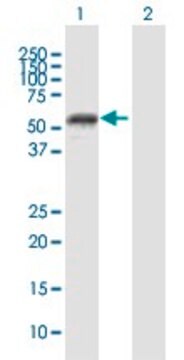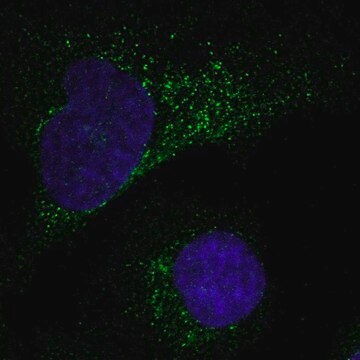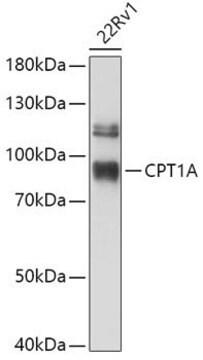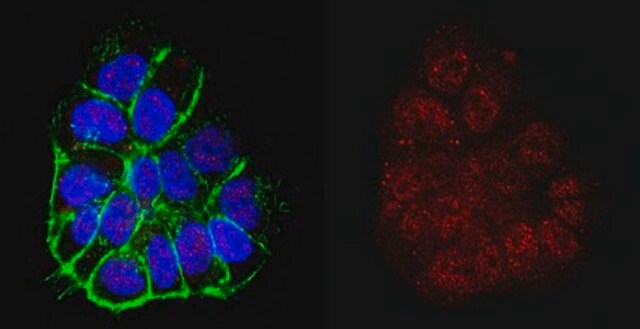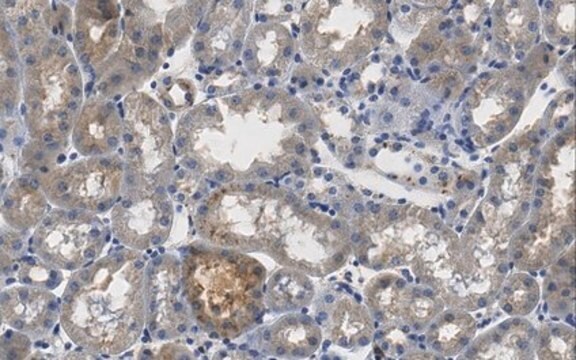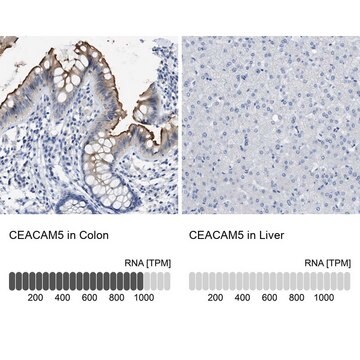IM35
Anti-MMP-1 (Ab-1) Mouse mAb (41-1E5)
liquid, clone 41-1E5, Calbiochem®
About This Item
Empfohlene Produkte
Biologische Quelle
mouse
Qualitätsniveau
Antikörperform
purified antibody
Antikörper-Produkttyp
primary antibodies
Klon
41-1E5, monoclonal
Form
liquid
Enthält
≤0.1% sodium azide as preservative
Speziesreaktivität
human
Darf nicht reagieren mit
bovine
Hersteller/Markenname
Calbiochem®
Lagerbedingungen
OK to freeze
avoid repeated freeze/thaw cycles
Isotyp
IgG2a
Versandbedingung
wet ice
Lagertemp.
−20°C
Posttranslationale Modifikation Target
unmodified
Angaben zum Gen
human ... MMP1(4312)
Allgemeine Beschreibung
Immunogen
Anwendung

Frozen sections (see application references)
Immunoblotting (1 g/ml)
Paraffin sections (2.5 g/ml, pressure cooker pre-treatment required)
Verpackung
Warnhinweis
Physikalische Form
Rekonstituierung
Sonstige Hinweise
Stetler-Stevenson, W.G., et al. 1993. FASEB7, 1434.
Zhang, J., et al. 1993. Clinica Chimica Acta.219, 1.
Woessner, J.F. 1991. FASEB5, 2145.
Liotta, L.A. and Stetler-Stevenson, W.G. 1990. in Seminars in Cancer Biology, ed. M. M. Gottesman. Vol. 1; 99-106.
Rechtliche Hinweise
Sie haben nicht das passende Produkt gefunden?
Probieren Sie unser Produkt-Auswahlhilfe. aus.
Lagerklassenschlüssel
12 - Non Combustible Liquids
WGK
WGK 2
Flammpunkt (°F)
Not applicable
Flammpunkt (°C)
Not applicable
Analysenzertifikate (COA)
Suchen Sie nach Analysenzertifikate (COA), indem Sie die Lot-/Chargennummer des Produkts eingeben. Lot- und Chargennummern sind auf dem Produktetikett hinter den Wörtern ‘Lot’ oder ‘Batch’ (Lot oder Charge) zu finden.
Besitzen Sie dieses Produkt bereits?
In der Dokumentenbibliothek finden Sie die Dokumentation zu den Produkten, die Sie kürzlich erworben haben.
Unser Team von Wissenschaftlern verfügt über Erfahrung in allen Forschungsbereichen einschließlich Life Science, Materialwissenschaften, chemischer Synthese, Chromatographie, Analytik und vielen mehr..
Setzen Sie sich mit dem technischen Dienst in Verbindung.


